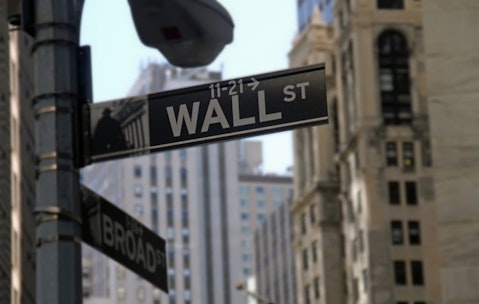In this article, we will look at the 10 best index funds to diversify your portfolio. If you want to skip reading about the benefits of investing in index funds, you can go directly to the 5 Best Index Funds to Diversify Your Portfolio.
Index funds are the go-to choice for investors looking to diversify their portfolios and effectively manage risk. As opposed to investing in an individual stock, buying a stake in an index fund allows investors to gain exposure to a variety of stocks and improve their chances of sustaining or even growing their returns. Index funds can be mutual funds or exchange-traded funds, both of which are designed to track the performance of a broad market index such as the S&P 500, the Dow, or the Russell 2000.
The Power of Index Funds and Reinvesting Dividends
Legendary value investor, Warren Buffett, briefly explained how investing in an index fund can save investors from a lot of the difficulties that they typically experience when picking individual stocks. Mr. Buffett appeared in an interview on CNBC where he shared his ideas about investing in index funds. Here is an excerpt from the interview:
“The best single thing you could have done on March 11th, 1942, when I bought my first stock, was just buy an index fund and never look at a headline and never think about stocks anymore… If you’d put $10,000 in an index fund that reinvested dividends (Back when I bought my first stock), it would come to 51 million dollars now.”
Index funds can be an integral part of an investor’s portfolio. For investors that seek to generate passive income and avoid stock market volatility, index funds can be a safe haven. Investors can invest in index funds through 401(k) accounts, traditional brokerage accounts, or Roth individual retirement accounts. By investing in an index fund, investors can gain exposure to industry-leading and outperforming businesses such as Alphabet, Inc. (NASDAQ:GOOGL), Honeywell International, Inc. (NYSE:HON), and Johnson & Johnson (NYSE:JNJ).

Our Methodology
To determine the 10 best index funds for portfolio diversification, we looked at both index mutual funds and index exchange-traded funds (ETFs). We narrowed down our selection to index funds that had low expense ratios and strong yields. We included index funds that tracked a variety of major market indices. Along with each of our picks, we have mentioned one notable holding of the fund and the analyst sentiment and top shareholder for that holding. We have ranked our picks in ascending order in terms of their trailing twelve months (TTM) yields.
10 Best Index Funds to Diversify Your Portfolio
10. Shelton Capital Management Nasdaq-100 Index Fund (NASDAQ:NASDX)
Yield (TTM): 0.27%
The Shelton Capital Management Nasdaq-100 Index Fund (NASDX) is a passively managed mutual fund that tracks the performance of the Nasdaq-100 Index and invests at least 80% of its assets in growth and value stocks of large-cap companies. The fund has a top 10 holdings concentration of 53.22% and has investments across the energy, real estate, materials, healthcare, and technology sectors. The fund has an expense ratio of 0.50%, a turnover ratio of 7.00%, and a trailing twelve-month yield of 0.27%.
One of the top 10 holdings of the Shelton Capital Management Nasdaq-100 Index Fund (NASDX) is Amazon.com, Inc. (NASDAQ:AMZN). On July 29, Cowen analyst John Blackledge raised his price target on Amazon.com, Inc. (NASDAQ:AMZN) to $215 from $210 and reiterated a buy-side ‘Outperform’ rating on the shares.
In the second quarter of 2022, Fisher Asset Management raised its stake in Amazon.com, Inc. (NASDAQ:AMZN) by 1,959%, bringing it to $5.16 billion in value. The investment covers 3.65% of Ken Fisher’s 13F portfolio.
Here is what Vulcan Value Partners had to say about Amazon.com, Inc. (NASDAQ:AMZN) in its second-quarter 2022 investor letter:
“Amazon.com, Inc. (NASDAQ:AMZN) has three components to its business model: online retail, cloud-based Amazon Web Services (AWS), and online advertising. We believe that the stock price has declined primarily due to its disappointing online retail results. Retail was extremely successful during COVID, and Amazon spent immensely to protect the consumer experience including buying extra inventory, buying inventory ahead of time, securing alternate shipping routes and adding extra warehouse space. We believe this long-term behavior has been successful for Amazon as customer retention and engagement remain at high levels. Post-COVID, the company is in the process of rightsizing its cost structure, and it is facing a tough period of comparisons. The retail segment is the smallest contributor to our overall value. The majority of the company’s value is in AWS, which we believe is one of the best businesses in the world. AWS’ revenue is expected to be approximately $80 billion this year, which is nearly double the amount in 2020. The company’s online advertising has turned into an attractive business that did not exist 15 years ago, and we estimate its revenue to be around $40 billion this year.”
9. Invesco QQQ ETF (NASDAQ:QQQ)
Yield (TTM): 0.61%
The Invesco QQQ ETF (NASDAQ:QQQ) employs a full replication technique to track the performance of the NASDAQ-100 Index. The fund invests in growth and value stocks of companies that come from the energy, real estate, consumer discretionary, consumer staples, and technology segments, among others. The fund has a top 10 holdings concentration of 52.75%, an expense ratio of 0.20%, and a trailing twelve-month yield of 0.61%.
One of the top 10 holdings of the Invesco QQQ ETF (NASDAQ:QQQ) is Costco Wholesale Corporation (NASDAQ:COST). Wall Street is bullish on Costco Wholesale Corporation (NASDAQ:COST). On August 4, Truist analyst Scot Ciccarelli raised his price target on Costco Wholesale Corporation (NASDAQ:COST) to $571 from $543 and reiterated a ‘Buy’ rating on the shares. This August, Erste Group analyst Hans Engel upgraded Costco Wholesale Corporation (NASDAQ:COST) to ‘Buy’ from ‘Hold’.
In the second quarter of 2022, Fisher Asset Management raised its stake in Costco Wholesale Corporation (NASDAQ:COST) by 3%, with the value of its position standing at $2.07 billion on June 30. The investment covers 1.47% of Ken Fisher’s 13F portfolio.
Like Alphabet, Inc. (NASDAQ:GOOGL), Honeywell International, Inc. (NYSE:HON), and Johnson & Johnson (NYSE:JNJ), Costco Wholesale Corporation (NASDAQ:COST) is a winning business that investors can own a stake in through an index fund and generate passive income.
8. Fidelity ZERO Large Cap Index Fund (NASDAQ:FNILX)
Yield (TTM): 0.97%
The Fidelity ZERO Large Cap Index Fund (NASDAQ:FNILX) tracks the performance of the Fidelity U.S. Large Cap Index and employs a representative sampling technique. The fund invests roughly 80% of its assets in large-cap growth and value stocks. The fund has a top 10 holdings concentration of 26.32% and has spread its investments across a variety of sectors including technology, healthcare, financials, and consumer defensive. The fund has an expense ratio of 0%, a turnover ratio of 5.00%, and a TTM yield of 0.97%.
Among the Fidelity ZERO Large Cap Index Fund’s (NASDAQ:FNILX) top holdings, we have Apple, Inc. (NASDAQ:AAPL), which Wall Street is bullish on. On August 19, KeyBanc analyst Brandon Nispel raised his price target on Apple, Inc. (NASDAQ:AAPL) to $185 from $177 and maintained a buy-side ‘Overweight’ rating on the shares.
In the second quarter of 2022, Berkshire Hathaway raised its stake in Apple, Inc. (NASDAQ:AAPL) to over $122 billion in value. As of June 30, Berkshire Hathaway owns roughly 895 million shares of Apple, Inc. (NASDAQ:AAPL) and is the most prominent shareholder in the company.
Here is what Wedgewood Partners had to say about Apple Inc. (NASDAQ:AAPL) in its second-quarter 2022 investor letter:
“Apple grew revenues +9%, driven by +17% growth in the Services segment. While iPhone revenues grew a modest +5%, it was on an exceptional year ago comparison of +66%. iPhone continues to capture most industry smartphone profits by focusing on high-end price tiers. Apple is taking nearly two-thirds of the revenue share in the premium ($400 and above) smartphone segment. Further, most of the growth was driven by expansion in the “ultra-premium” price tier of $1000 or more per unit.[1] As we have highlighted in the past, Apple’s relentless focus on the development and integration between hardware (especially integrated circuits) and software continues to add significant value for customers of its products and services. We expect this favorable competitive dynamic to continue for the foreseeable future.”
7. Fidelity US Sustainability Index Fund (NASDAQ:FITLX)
Yield (TTM): 0.97%
The Fidelity US Sustainability Index Fund (NASDAQ:FITLX) is an index mutual fund that invests in growth and value stocks of invests of companies that follow strong ESG policies and practices. The fund employs a representative sampling technique and seeks to track the performance of the MSCI USA ESG Leaders Index. The fund has a top 10 holdings concentration of 33.99% and has investments across a diverse range of sectors including technology, energy, healthcare, consumer cyclical, and consumer defensive. The fund has an expense ratio of 0.11% and a trailing twelve-month yield of 0.97%.
One of the top holdings of the Fidelity US Sustainability Index Fund (NASDAQ:FITLX) is The Procter & Gamble Company (NYSE:PG). On August 2, Barclays analyst Lauren Lieberman revised her price target on The Procter & Gamble Company (NYSE:PG) to $154 from $157 and maintained an ‘Overweight’ rating on the shares.
As of June 30, Bridgewater Associates owns more than 6.74 million shares of The Procter & Gamble Company (NYSE:PG) and is the largest shareholder in the company. The investment covers 4.11% of Ray Dalio’s 13F portfolio.
Some of the best stocks that investors can gain exposure to through index funds include Alphabet, Inc. (NASDAQ:GOOGL), Honeywell International, Inc. (NYSE:HON), Johnson & Johnson (NYSE:JNJ), and The Procter & Gamble Company (NYSE:PG).
6. Schwab S&P 500 Index Fund (NASDAQ:SWPPX)
Yield (TTM): 1.36%
The Schwab S&P 500 Index Fund (NASDAQ:SWPPX) tracks the performance of the S&P 500 Index and uses a full replication technique. The fund invests 80% of its assets in both growth and value stocks of large-cap companies that are tracked by the S&P 500 Index. The fund has an expense ratio of 0.02%, a turnover ratio of 3.00%, and a trailing twelve-month yield of 1.36%. The fund has a top 10 holdings concentration of 28.09% and has investments across the technology, healthcare, energy, and communications segments.
One of the top holdings of the Schwab S&P 500 Index Fund (NASDAQ:SWPPX) is Microsoft Corporation (NASDAQ:MSFT). On July 27, BMO Capital analyst Keith Bachman raised his price target on Microsoft Corporation (NASDAQ:MSFT) to $320 from $305 and reiterated a buy-side ‘Outperform’ rating on the shares.
In the second quarter of 2022, Fisher Asset Management raised its stake in Microsoft Corporation (NASDAQ:MSFT) by 3%, giving it a $7.36 billion position in the company. The investment covers 5.21% of Ken Fisher’s 13F portfolio.
Here is what investment management firm Ave Maria had to say about Microsoft Corporation (NASDAQ:MSFT) in its “Ave Maria Focused Fund” second-quarter 2022 investor letter:
“Microsoft Corporation (NASDAQ:MSFT)’s cloud business is nearly half of the company’s revenue and the largest business in Microsoft, with Office 365 being the second largest. The cloud business helps customers save money, so it is somewhat recession-proof. Office 365 allows customers to purchase low annual subscriptions, as opposed to purchasing expensive license agreements every few years. This could keep the revenue stable in a tough economic environment. We believe the company will be able to maintain mid-teen revenue growth for the foreseeable future.”
Click to continue reading and see the 5 Best Index Funds to Diversify Your Portfolio.
Suggested Articles:
- 10 Best Vanguard ETFs to Invest In
- 10 ETFs to Buy and Hold for the Next 10 Years
- 10 Best ETFs to Invest In for Retirement
Disclosure. None. 10 Best Index Funds to Diversify Your Portfolio is originally published on Insider Monkey.




